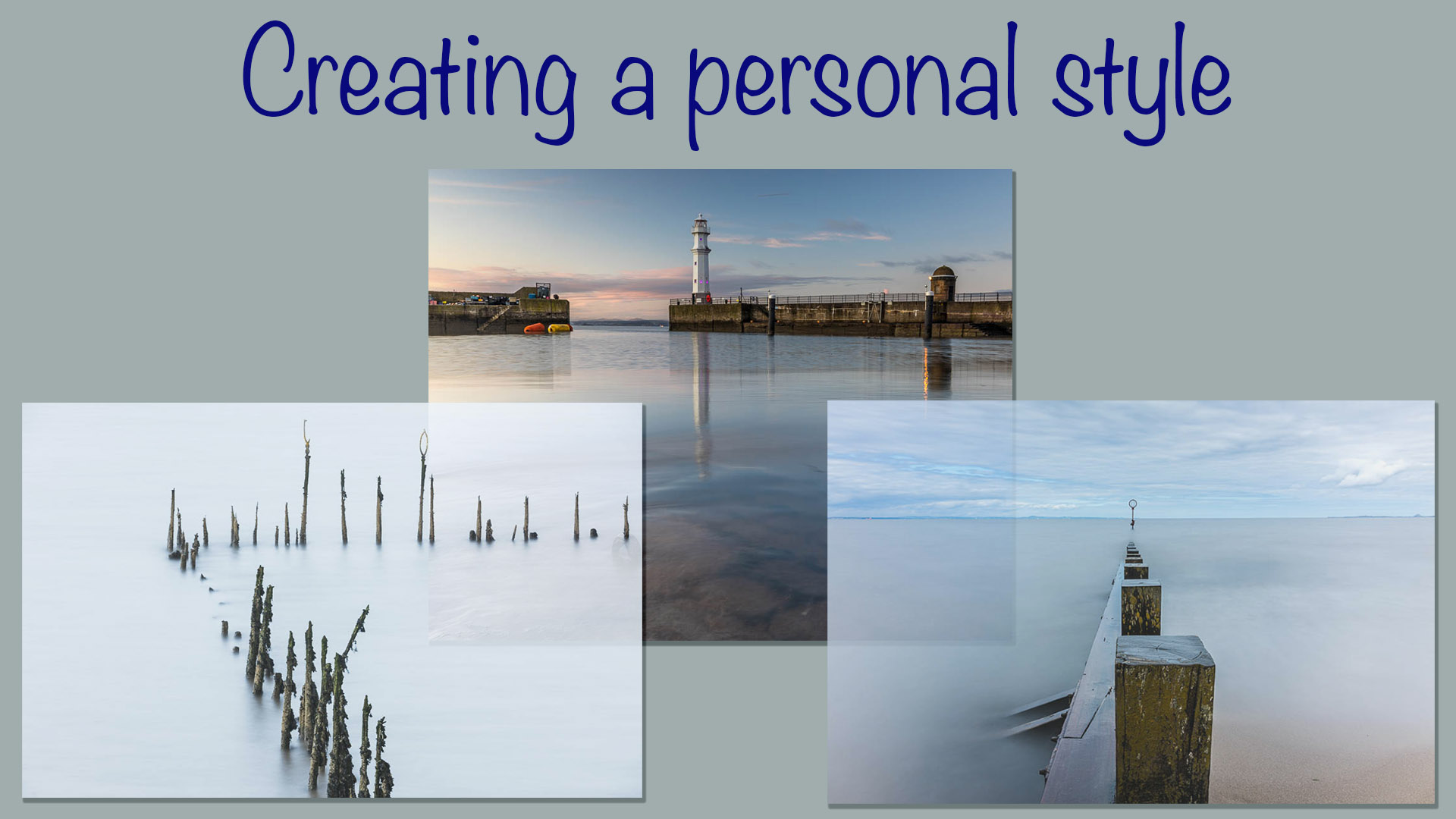July 22, 2020
Personal Style in Photography
How can you create your personal style when you are taking pictures? Here are some tips to developing your signature look in your photos

When you’re flicking through Instagram or Facebook looking at photographs, you may find that there are individual photographers who interest you more. There’ll be something about the way they take photos that you like. It could be the subject matter, the way they post-process or even the colour palette they use. All these things are an example of personal style. How can you develop your style so that others will recognise you as the photographer?
Identifying a personal style
Before you think about creating a personal style in your photography, it’s good to identify what it is that interests you. Before I became a full-time photographer, I had a ‘proper’ job in an office. I would often write papers to propose changes to business processes that would eventually end up on a directors desk. Directors can be funny creatures, and they like their documents to suit the way they read. I quickly realised that I could look at presentations they’d bought into in the past to tailor my reports to meet their needs. The first step in developing a personal style is quite similar.
There are some great websites where you can see the work of other photographers. 500px, Flickr and Instagram are great ways to see how other photographers take their photos. You could also look at the websites of photographers you rate. You could head to richdysonphotography.com and have a look at the photographs I think represents my personal style.
As you flick through the images, find a way to mark the ones that appeal to you most of all. I like to use Pinterest as a way of collecting images. You could also use a more simple method of taking a screen-shot of your favourite photos and save them to a folder on your hard-drive. Do this for a couple of weeks so that you identify pictures when you are feeling in different moods.
Analysing the common features
Now you’ve collected a portfolio of pictures that you like you can try and understand the commonality. Spend some time looking closely at each of the photographs that triggered something in your mind. There are several things that it could be, but don’t think of this as an exhaustive list.
Think about the subject matter. Are you drawn to a particular style of photography such as portraiture, landscapes, street photography or sports? Finding a subject that interests you is going to help to start taking photos that people will instinctively recognise as yours. Over time, I realised that I enjoy capturing the movement of water, so you’ll see that a great deal of my work includes rivers, waterfalls or the sea. My Seascape and Landscape workshop is a particularly pleasurable session to deliver as a result.
The kind of colour palette used could have a bearing in the style that will develop. If the majority of the photographs you saved are in black and white, then it’s likely that you’ll build your portfolio in monochrome photography. Alternatively, it could be that bright colours of fashion photography are your thing which will push you toward a path of this style of photography. If you take a look through the set of three of my images, you’ll see that I tend to enjoy subjects with a blue hue to them. It’s not a conscious thing that I think about when taking the shot, but over time it has developed into something I use unconsciously.
How images are composed can also help a personal style appear. Street photographers will tend to shoot in a way that allows a story to unveil itself. Often, they’ll shoot with a wide(ish) angle lens and get close into the action as it unfurls. A landscape photographer may introduce a strong foreground subject such as a rock or flowers into their work which then becomes a feature of their personal style. Look again at the shots I added above, and I tend to use leading lines in many of my photos to pull you into the scene.
Lighting can also form part of your style, particularly as a portrait photographer. Let’s compare two entirely different photographers to see how they choose to use lighting. Rankin produces iconic photographs such as his photographs of Tony Blair or Oasis that grace the covers of magazines such as GQ. His high-key style has become part of his brand. Contrast this with the American photographer, Joel Grimes, who has a very different lighting technique where he uses three lights to create contrast as well as compositing the image onto backgrounds to give a highly commercial effect.
Some photographers will also employ post-processing techniques to differentiate their personal style. If you looked at the portfolio of Joel Grimes, he creates a strong identity in the way he prepares his photographs. Wedding photographers will very often create their own presets to deliver a look and feel that their clients were attracted to when the booking took place several months before.
Look at these attributes as well any others that stand out as you analyse the mood board of images you created. Hopefully, you’ll have started to see some trends in the photographs you have chosen that you can then begin to deploy in your photographs.
Now forget it all
The next bit of advice will surprise you at first, but there is a distinction between creating your style and copying someone else’s. The last thing you’ll want do is simply re-create another photographer’s work. Now you’ve identified the attributes of images you enjoy, try not to go back and simply re-create them. Instead, incorporate the things that generally appealed to you into your work.
Go out and shoot subjects that meet your tick list and enjoy the art of taking photographs, after all, you should be shooting the kind of things you like, in the way that you want. When you’ve finished shooting and editing, you can now analyse how successfully you have met the brief you have set for yourself. Think about the things that resonated with you in other pictures and decide if you’ve successfully included them in your photographs. Don’t be disappointed if the first time you shoot doesn’t create a personal style that represents you. It’s going to take several months or years before the personality of your photographs develops. You may need to look at improving your technical skills to reach your stylistic goals. It might also be worthwhile to work with a mentor who can provide a removed viewpoint to your work. A good mentor will give broad advice without trying to change your style to their own.
Try something else
Once you have arrived at the style that reflects you as a photographer, I am afraid that it doesn’t stop there. If I asked you what style of musician Prince, David Bowie or Madonna were, I am sure that you’d find it difficult to pigeon-hole them into one genre. That’s because they continued to evolve, despite reaching the top of their game.
In the days before I was a photographer, I worked in Financial Services. One of my managers gave me a fantastic book that has stuck with me. It’s called Who Moved My Cheese by Spencer Johnson and is an excellent metaphor for the way to think about personal style in photography. You’ll probably spend a couple of years developing a style, another two or three in enjoying using it and then the pleasure will start to wane. The key is to try and make the five-year cycle overlap. As one enjoyable period in your photography career comes to an end, you’ll be just embarking on a new one. I’d love to see how your personal style in photography has started to develop. You can leave a link to your portfolio on the comments section of the blog.
Listen along
If you don’t feel like spending time reading these blogs, you can now listen to them instead. Head to your usual podcast providers such as iTunes or Google podcasts and search for The Edinburgh Photography Workshop Podcast. If you do like listening, please subscribe to hear it every week and leave a review. That helps others to find the podcast as well.
Give us your feedback
If you’ve got any questions or comments, leave them below. You can sign up for the Edinburgh Photography Workshop monthly newsletter where you’ll get regular updates on exciting things happening in photography and some great tips. Sign up by clicking here.
